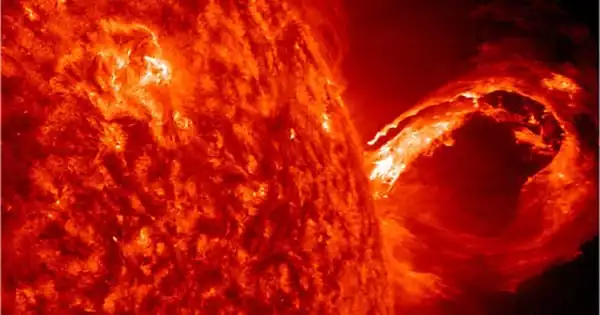Long-duration spaceflight can have negative effects on the human body. Prolonged exposure to microgravity can lead to a loss of bone density, muscle atrophy, and changes to the cardiovascular system. Additionally, exposure to cosmic radiation and other space environmental factors can increase the risk of cancer and other diseases.
Ever wondered if you have anything in common with an astronaut? Turns out there are 206 things your bones. A study on bone loss in astronauts and the crucial question of whether bone can be regained after returning to Earth focuses on these regions of our bodies.
The TBone study was started in 2015 by Dr. Steven Boyd, PhD, director of the McCaig Institute for Bone and Joint Health and professor in the Cumming School of Medicine. In order to determine if bone rebounds after “long-duration” spaceflight, the study followed 17 astronauts before and after spaceflight over the course of seven years.
Though the research may not appear significant to you from Earth, it is crucial to understand bone health in general. Findings are reported in Scientific Reports.
“Bone loss happens in humans as we age, get injured, or any scenario where we can’t move the body, we lose bone,” says Dr. Leigh Gabel, PhD, assistant professor in Kinesiology, and lead author of the study.
“Understanding what happens to astronauts and how they recover is incredibly rare. It lets us look at the processes happening in the body in such a short time frame. We would have to follow someone for decades on Earth to see the same amount of bone loss,” Gabel says.
Just as the body must adapt to spaceflight at the start of a mission, it must also readapt back to Earth’s gravity field at the end. Fatigue, light-headedness, and imbalance were immediate challenges for me on my return. Bones and muscles take the longest to recover following spaceflight. But within a day of landing, I felt comfortable again as an Earthling.
Dr. Robert Thirsk
The researchers flew to Houston, Texas’ Johnson Space Center to scan the astronauts’ wrists and ankles before they launched into space, after they returned to Earth, and then at six and twelve months.
“We found that weight-bearing bones only partially recovered in most astronauts one year after spaceflight,” she says. “This suggests the permanent bone loss due to spaceflight is about the same as a decade worth of age-related bone loss on Earth. This loss happens because bones that would normally be weight-bearing on Earth, like your legs, don’t have to carry weight in microgravity you just float.”
“We’ve seen astronauts who had trouble walking due to weakness and lack of balance after returning from spaceflight, to others who cheerfully road their bike on Johnson Space Center campus to meet us for a study visit. There is quite a variety of response among astronauts when they return to Earth, says Boyd.”
Former UCalgary Chancellor and astronaut, Dr. Robert Thirsk, BSc (Eng)’76, Hon. LLD’09, MD, knows firsthand how bizarre the return to Earth can be.
“Just as the body must adapt to spaceflight at the start of a mission, it must also readapt back to Earth’s gravity field at the end,” says Thirsk. “Fatigue, light-headedness, and imbalance were immediate challenges for me on my return. Bones and muscles take the longest to recover following spaceflight. But within a day of landing, I felt comfortable again as an Earthling.”
Compared to astronauts who flew for longer periods of time, some astronauts who flew shorter missions, under six months, restored bone strength and density in the lower body.
Access to astronauts is rare the study team includes two members from the European Space Agency (ESA), Dr. Anna-Maria Liphardt, PhD, and Martina Heer, PhD, as well as two from NASA, Dr. Scott Smith, PhD, and Dr. Jean Sibonga, PhD. The study was funded by the Canadian Space Agency and conducted in partnership with ESA, NASA and astronauts from North America, Europe, and Asia.
The study’s next iteration will examine the impacts of even longer voyages to support astronauts who may someday travel beyond the International Space Station as future space missions investigate travel to more distant regions.
As Thirsk says, “Astronauts will venture to deep space this decade and, in the coming centuries, humanity will populate other star systems. Let’s push back the frontiers of space exploration now to make this vision possible.”
Dr. Leigh Gabel, PhD, is an assistant professor in the Faculty of Kinesiology, a member at the McCaig Institute for Bone and Joint Health in Cumming School of Medicine and a member of the Alberta Children’s Hospital Researcher Institute.
Dr. Steven Boyd, PhD, is a professor at the Cumming School of Medicine (CSM) in the Department of Radiology and holds a joint position at the Schulich School of Engineering and the Faculty of Kinesiology. He is the director of the McCaig Institute for Bone and Joint Health at the CSM, and the Bob and Nola Rintoul Chair in Bone and Joint Research, as well as the McCaig Chair in Bone and Joint Health.
















